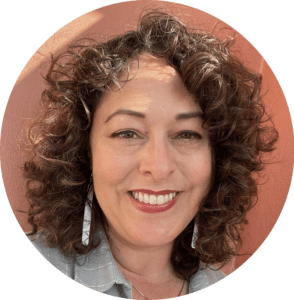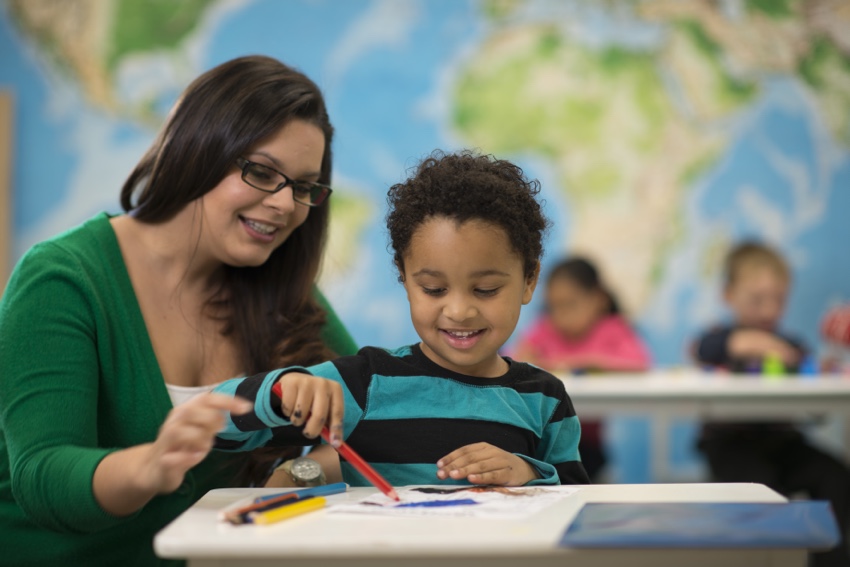Help Families Maintain Children’s Connection to Their Languages and Cultures


I met “Jasleen,” a program administrator, several years ago in a suburb of Chicago while presenting on supporting multi-language learners. During the session, she listened quietly, multitasking on her computer, occasionally looking up from her work to make a comment or answer questions from teachers. She was listening, but I didn’t get the sense that she was particularly engaged.
Then I noticed her head snap up. We had just begun to discuss our own personal experiences as multi-language learners. Her authoritative, professional composure fell away as she broke down in tears. She told us about her mother, an immigrant from the Dominican Republic who only spoke Spanish. Jasleen’s mother always avoided school functions because she had been treated so poorly by school staff and was made to feel ashamed that she didn’t speak English. She told us how she noticed people dismissing or speaking down to her mother because she was different—a black woman who spoke Spanish. Jasleen’s mother withdrew into herself and encouraged Jasleen to speak only English. Jasleen quickly learned that Spanish was only for home and that English was the language of the world outside, particularly, the language of school. Jasleen explained that her relationship with her mother became strained over the years with each struggling to express their own feelings and needs, grasping at the limited language they shared, never truly connecting with or understanding each other.
Jasleen was silent for a moment and participants nodded in understanding. Jasleen shared her deep regret at being ashamed of her mother’s halting, accented English, of rejecting her Latina identity, and at losing her ability to speak Spanish all in order to fit in with her English-speaking, American peers.
For people like Jasleen, losing the connection to one’s family’s language, culture, and heritage can be profoundly devastating and take years to repair.
Help children maintain their cultural identity
Thankfully, today there are practices and resources available to help children like Jasleen and their families maintain their cultural identity and fluency in the family’s language(s).
Making assumptions about children and their families’ language needs can have profound effects, as we see with Jasleen and her mother. To avoid these assumptions, consider how your program determines a child’s home (or first) language. We recommend using the Home Language Survey, which is available online in SmartTeach, and the Objectives for Development & Learning, for all children who are entering your program. The Home Language Survey helps teachers learn about the languages each child is exposed to and uses at home and at school. Taking a few minutes to complete the survey with every family communicates your program’s commitment to learning about each family and supporting each child’s needs. The survey can also inform a program’s staffing considerations and future family engagement activities and can help teachers plan learning experiences.
The Home Language Survey
The “Home Language Survey” asks family members four questions about the language(s) children have been exposed to in the home environment and the language(s) children use at home and at school. Responses are scored on a scale from 1 (only English) to 5 (only home language [not English]). Add the numbers for each question and divide the sum by the number of questions you were able to answer.
- If the result of the survey is a value of 2 or greater—which generally indicates that the child uses “mostly English, but sometimes the home language”—and if the child is in a preschool 3 or older class where English is the primary language, teachers will assess that child’s ability to understand and speak English using the English language acquisition objectives—which are Objective 37, “Demonstrates progress in listening to and understanding English” and Objective 38, “Demonstrates progress in speaking English.”
- If the survey results in a value less than 2—which generally indicates that the child uses “only English”—English can be considered the child’s primary language, and teachers will not need to assess that child’s skills Objectives 37 and 38.
The “Home Language Survey” can provide valuable information that can help programs assign children with the same first language to the same classrooms, instead of “sprinkling” children who speak a language other than English into different classrooms. Survey results can also help teachers plan and individualize experiences for all children; however, please note that Objectives 37 and 38 are only meant to be used for English-language learners in preschool 3, pre-K 4, or kindergarten through third grade classrooms. This is because preschool children and older children are in the process of learning English after already establishing a beginning foundation in their first languages.
Supporting English-language learners
Once you have an idea of the number of languages represented in your program and the number of children who are potential English-language learners, it’s time to begin planning how to support children and families who speak a language other than English. For programs that have a limited number of languages represented, it might be easier to find staff to help observe and assess children. However, some programs in rural areas may have difficulty finding teaching staff to support children’s language needs. For instance, a program in California may have a number of staff members who can assist with observing Spanish-speaking children, but a rural program in Vermont may find this task more challenging. Some programs may also struggle to support children who have first languages that are unfamiliar to teachers. Many English-speaking teachers have taken high school Spanish or French, so they may feel at least a little familiar with these languages and may be able to “model” them in the classroom, but what about children who speak Mandarin, Tagalog, or Urdu? Clearly, one solution can’t meet all needs.
The goal, in each case, is to find consistent support for multi-language learners and offer opportunities for them to demonstrate their knowledge, skills, and abilities in this area. Programs may have to consider creative ideas and ask themselves the following questions:
- Are there family members who are willing to share audio recordings of themselves singing nursery rhymes for children to listen to at school?
- Can you find books, magazines, grocery packaging items, musical instruments, or child-friendly music in children’s first languages that you can add to the classroom environment?
- Are there community groups that might be able to visit the school on a regular basis to read books, tell stories, or lead dance or art experiences in children’s first languages?
- Can the program partner with the local public library to sign families up for library cards? Does your local library have the resources to give families access to materials that are in families’ languages?
- Can families work together to create simple alphabet or emotions books to add to classroom libraries during a family meeting or a literacy night?
- Are there family members who are willing to teach you and the program staff a few words and phrases (especially comfort words and phrases that are related to daily routines and instructions)?
I recently saw this beautiful example shared on Twitter. Look at the pride on the daughter’s face as her language and culture is celebrated and shared with the classroom community.
Parent,”I would like to come read to the class, but I can’t read English.” Me, “well, please come read in your language.” Parent, “really? “ Me, “of course!” And,she did and it was amazing!!Thank you to this mom for reading to us!📚 You made your daughter proud! 😊 #cridgepride pic.twitter.com/ukyeah59lb
— Mrs. Ryan (@MrsRyan310) September 30, 2019
Embrace “First Language”
Finally, one powerful way to communicate your dedication to English-language learners and their families is to replace the phrase “home language” with “first language” whenever possible. The term “home language” implies that this language is reserved for use only at home and suggests that English is the public or “academic” language, as Jasleen and her mother experienced.